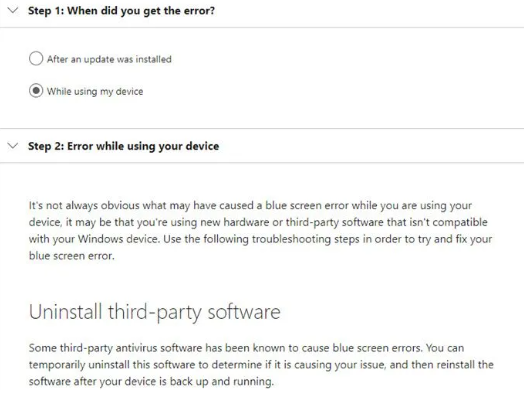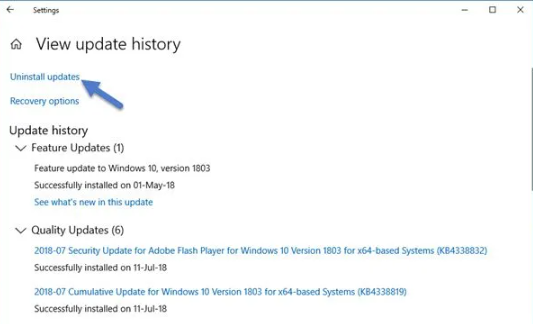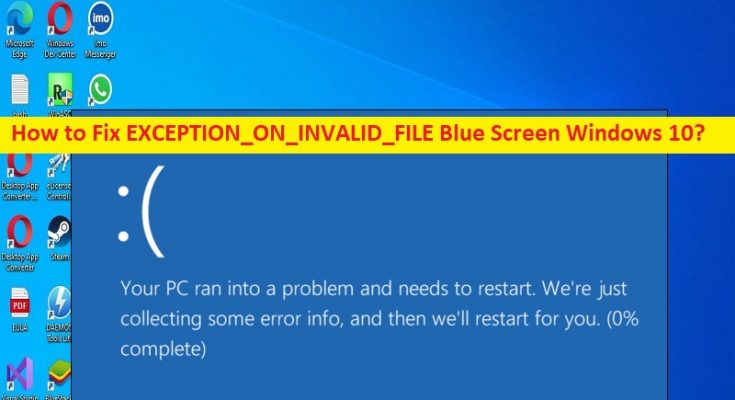What is ‘EXCEPTION_ON_INVALID_FILE’ Blue Screen error in Windows 10?
If you are experiencing EXCEPTION_ON_INVALID_FILE Blue Screen Windows 10 or EXCEPTION_ON_INVALID_FILE Blue Screen error in Windows 10 computer, and looking for ways to fix, then you are in right-place for the solution. You are provided here with easy steps/methods to resolve the issue. Let’s starts the discussion.
‘EXCEPTION_ON_INVALID_FILE Blue Screen’ error:
‘EXCEPTION_ON_INVALID_FILE’ error is BSOD error or Blue Screen of Death (BSOD) error. This error is sometimes appeared with Black screen. The error is appeared with message saying ‘Your PC ran into a problem and needs to restart. We’re just collecting some error info and then we’ll restart for you’ along with some Windows Stop Codes like EXCEPTION_ON_INVALID_FILE error. This error prevents you from working on Windows computer comfortably.
There could be several reasons behind the issue including the corruption in system files and system image, corrupted hard disk drive or bad sectors, corrupted BCD or MBR, and other issues. You can run SFC Scan, DISM scan and CHKDSK scan in computer to repair corruption in system files, system image, hard disk drive and bad sectors, in order to fix this error. It is possible to fix the issue with our instructions. Let’s go for the solution.
How to fix EXCEPTION_ON_INVALID_FILE Blue Screen Windows 10?
Method 1: Fix ‘EXCEPTION_ON_INVALID_FILE’ error with ‘PC Repair Tool’
‘PC Repair Tool’ is quick & easy ways to find and fix BSOD errors, DLL errors, EXE errors, problems with programs/applications, malware or viruses infections in computer, system files or registry issues, and other system issues with just few clicks.
Method 2: Run Blue Screen Online troubleshooter

You can run Windows built-in Blue Screen Online troubleshooter to fix the issue.
Step 1: Open ‘Settings’ app in Windows PC and go to ‘Update and Security > Troubleshoot > Additional Troubleshooters’
Step 2: Find and select ‘Blue Screen’ troubleshooter, and click ‘Run the troubleshooter’ and follow on-screen instructions to finish troubleshooting and once finished, check if the issue is resolved.
Method 3: Run SFC Scan, DISM Scan, and CHKDSK Scan
You can run SFC scan, dism scan and chkdsk scan in Windows computer to repair corruption in system files, system image and hard disk drive.
Step 1: Type ‘cmd’ in windows search box and press ‘CTRL + SHIFT + ENTER’ keys on keyboard to open ‘Command Prompt as Administrator’
Step 2: Type the following commands and hit ‘Enter’ key after each to execute.
sfc /scannow
chkdsk /f /r x:
dism.exe /online /cleanup-image /restorehealth
Step 3: Once executed, restart your computer and check if the issue is resolved.
Method 4: Perform Clean Boot
This issue can be occurred due to interference of some conflicting apps/services.
Step 1: Open ‘System Configuration’ app in Windows PC via Windows Search Box
Step 2: Click ‘Services’ tab, tick ‘Hide all Microsoft Services’ checkbox and hit ‘Disable All’ button
Step 3: Finally, click ‘Apply > Ok’ button to save the changes and then restart your computer, and check if the issue is resolved.
Method 5: Rebuild BCD and MBR
Another way to fix the issue is to rebuild BCD and repair MBR in computer.
Step 1: Restart your computer several times until you see Windows Recovery Environment
Step 2: Go to ‘Troubleshoot > Advanced Options > Command Prompt’
Step 3: Type the following commands and hit ‘Enter’ key after each to execute.
bootrec.exe /rebuildbcd
bootrec.exe /fixmbr
bootrec.exe /fixboot
Step 4: Once executed, restart your computer and check if the issue is resolved.
Method 6: Uninstall recently updates or feature in Windows 10

Step 1: Open ‘Settings’ app in Windows PC and go to ‘Update and Security > Windows Update > view update history > Uninstall updates’
Step 2: Find and select recently installed updates and click ‘Uninstall’ to uninstall it, and then restart your computer and check if the issue is resolved.
Method 7: Perform System Restore
You can perform System restore in computer to restore your computer to valid restore point.
Step 1: Press ‘Windows + R’ keys on keyboard, type ‘rstrui’ in ‘Run’ window and hit ‘Ok’ button to open ‘System Restore’
Step 2: Click ‘Next’, select a valid restore point according to date & time when there was no issue at all in computer, and then hit ‘Next > Finish’ to start restoring process and once done, check if the issue is resolved.
Method 8: Perform clean Windows install
Another way to fix the issue is to perform clean Windows Installation in computer. To do so, you need to insert a bootable Windows installation media USB into computer and boot your computer with it, run the Windows setup and follow on-screen instructions to finish installation, and once done, check if the issue is resolved.
Conclusion
I hope this post helped you on How to fix EXCEPTION_ON_INVALID_FILE Blue Screen Windows 10 with easy ways. You can read & follow our instructions to do so. That’s all. For any suggestions or queries, please write on comment box below.



